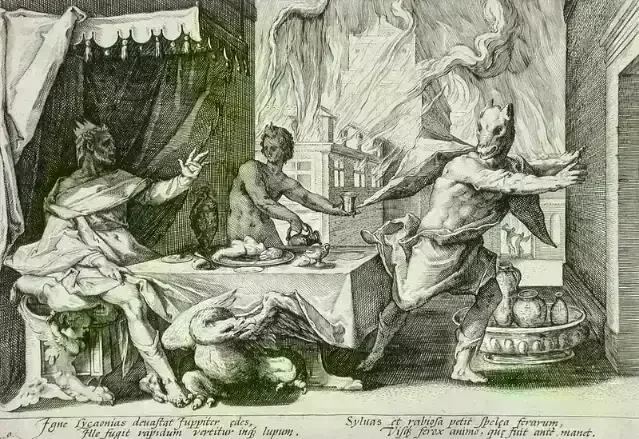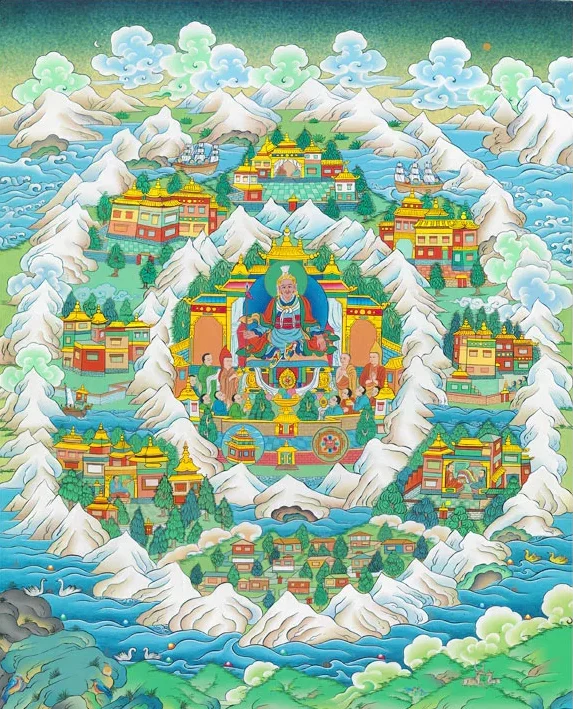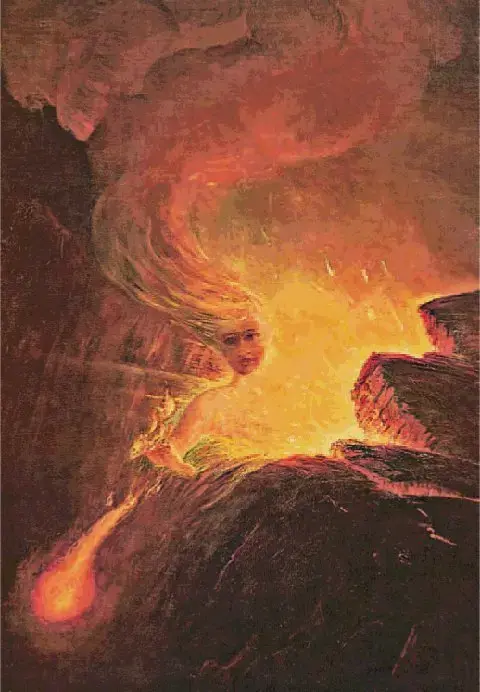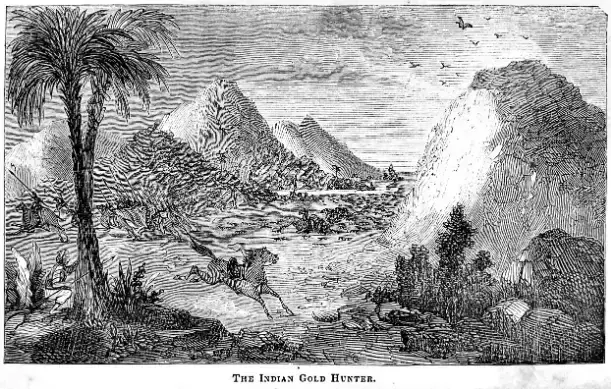Werewolf

In folklore, a werewolf (from Old English werwulf meaning 'man-wolf'), or sometimes lycanthrope (from Ancient Greek λυκάνθρωπος, lykánthrōpos, 'wolf-human'), refers to a person who can transform into a wolf or wolf-like creature. In modern interpretations, particularly film, werewolves often appear as hybrid wolf-human creatures. These transformations typically occur during full moons and may result from a curse, affliction, or being bitten or scratched by another werewolf. Early documented references to this condition, called lycanthropy, come from Petronius (27-66 CE) and Gervase of Tilbury (1150-1228).
Werewolf beliefs are widespread throughout European folklore, with many regional variations united by a common development within medieval Christian interpretations of older European myths. During the colonial period, these beliefs spread to the New World. Werewolf folklore developed alongside witch beliefs during the Late Middle Ages and early modern period.
Werewolf trials emerged in present-day Switzerland, particularly in Valais and Vaud, in the early 15th century. These trials spread across Europe during the 16th century, reached their height in the 17th century, and declined by the 18th century. While werewolf persecution was part of the broader witch-hunt phenomenon, it represented only a small fraction of witchcraft trials. Early accusations often combined lycanthropy with "wolf-riding" or "wolf-charming." The notorious case of Peter Stumpp in 1589 sparked increased interest and persecution of alleged werewolves, primarily in French and German-speaking regions. This persecution lasted longest in Bavaria and Austria, with the final cases of "wolf-charmers" recorded in the early 18th century in Carinthia and Styria.
After witch trials ended, werewolves became subjects of folklore studies and Gothic horror literature. Werewolf fiction has premodern roots in medieval romances like Bisclavret and Guillaume de Palerme, developing further through 18th-century chapbooks. By the 20th century, werewolf trappings became firmly established in horror literature and eventually evolved into a standard element in modern horror and fantasy entertainment.


